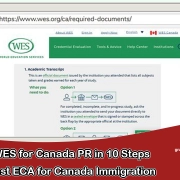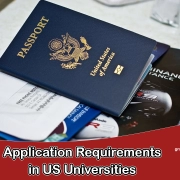How to Write a Course Description in 2024 (TIPS & SAMPLES)
A course description serves as a concise and comprehensive snapshot of an academic offering, distilling crucial details such as the course title, code, prerequisites, and overarching objectives. Beyond the basics, it articulates the expected learning outcomes, providing prospective students with clarity on the educational journey ahead. Within this narrative, participants gain insight into the intricacies of the curriculum, exploring specific content, topics, and diverse assessment methods. The document also spotlights required readings or textbooks, offering a preview of the foundational literature shaping the course. In essence, a well-crafted course description acts as a guiding compass, empowering students to make informed decisions about their academic pursuits and ensuring a more enriching learning experience.

Students often use Course descriptions to determine whether a particular course aligns with their academic interests. Instructors also use them to communicate information to potential students. Additionally, course descriptions may include details such as prerequisites, course topics, and learning outcomes.
- Course format: This describes the format of the course, such as whether it is offered online or in-person, whether it is a lecture or a seminar, and whether it involves any lab or fieldwork.
- Course outcomes: This section outlines what students can expect to achieve upon completing the course. For example, they may acquire specific skills or knowledge, develop critical thinking abilities, or gain an understanding of a particular topic.
- Course requirements: This section details any prerequisites, co-requisites, or other requirements that students must meet before enrolling in the course. For example, a math course may require students to complete a specific algebra level before enrolling.
- Course schedule: This section provides information about the timing of the course, including the start and end dates, the meeting times and days, and any breaks or holidays during the term.
- Grading policy: This section outlines how students will be evaluated and graded in the course. It may include information about the types of assessments used (e.g., exams, papers, presentations), the weighting of different assignments, and the grading scale used.
Course Description of Undergraduate Degree
The layout for a course description for an undergraduate degree typically follows a standard format, which includes the following sections:
- Course Title: The official title of the course, which is usually a summary of its content and objectives.
- Course code: A unique identifier assigned to the course by the institution, which is used for registration and tracking purposes.
- Course Description: A summary of the course’s content, goals, and objectives.
- Prerequisites: Any required courses, skills, or knowledge that students must have before enrolling in the course.
- Course goals and objectives: A summary of the course’s overall goals and the specific learning objectives students are expected to achieve.
- Course content and topics: A detailed description of the course’s content, including the key concepts, theories, and principles covered.
- Course format: Information on the course format, including the number of lectures, discussions, labs, or other activities involved.
- Assessment methods: Information on how students will be evaluated, including the types of assignments, exams, or projects involved.
- Required textbooks and materials: A list of the course’s textbooks, readings, or other materials required.
- Credit hours: The number of credit hours the course offers indicates the time and effort required to complete the course.
- Target audience: The intended audience for the course may include undergraduate students in a specific major or program.
Course Description of Graduate Degree
The layout for a course description for a graduate degree typically follows a similar format to that of an undergraduate degree, but with some additional sections that are specific to graduate-level coursework. Here is a typical layout for a graduate-level course description:
- Course Title: The official title of the course, which is usually a summary of its content and objectives.
- Course code: A unique identifier assigned to the course by the institution, which is used for registration and tracking purposes.
- Course Description: A summary of the course’s content, goals, and objectives.
- Prerequisites: Any required courses, skills, or knowledge that students must have before enrolling in the course.
- Course goals and objectives: A summary of the course’s overall goals and the specific learning objectives that students are expected to achieve.
- Course content and topics: A detailed description of the course’s content, including the key concepts, theories, and principles covered in the course.
- Course format: Information on the format of the course, including the number of lectures, discussions, labs, or other activities involved.

- Assessment methods: Information on how students will be evaluated, including the types of assignments, exams, or projects involved.
- Required textbooks and materials: A list of the textbooks, readings, or other materials required for the course.
- Credit hours: The number of credit hours the course offers, which indicates the amount of time and effort required to complete the course.
- Target audience: The intended audience for the course, may include graduate students in a specific major or program.
- Research requirements: Information on any research requirements for the course, such as a thesis or dissertation.
- Learning outcomes: A list of the specific knowledge, skills, and competencies that students are expected to develop during the course.
- Independent study: Information on any independent study or self-directed learning opportunities that are available as part of the course.
- Course expectations: A description of the level of rigor and academic expectations for the course, including the amount of independent study and critical thinking required.
How Should Write a Course Description?
When writing a course description, there are several key elements you should include to effectively communicate the purpose, content, and objectives of the course to your audience. Here are some tips on how to write a course description:
- Be concise: A course description should be brief and to the point, ideally no more than a few paragraphs. Avoid including unnecessary details or technical jargon that could confuse or overwhelm your audience.
- Use clear language: Write in clear and simple language that is easy to understand. Avoid using acronyms, technical terms, or jargon that your audience may not be familiar with.
- Focus on the benefits: Highlight the benefits of taking the course, such as the skills or knowledge students will gain, or how it will help them achieve their academic or career goals.
- Use active verbs: Use active verbs to describe the course content and objectives. For example, instead of saying “The course will cover the principles of marketing,” say “Students will learn how to apply marketing principles to real-world business situations.”
- Define prerequisites: If the course has prerequisites, clearly define what they are and how they will be assessed.
- Include course goals and objectives: Clearly state the overall goals of the course and the specific learning objectives that students are expected to achieve.
- List course topics: List the key topics that will be covered in the course and provide a brief description of each one.
- Provide assessment details: Explain how students will be assessed, including the types of assignments, exams, or projects they will be required to complete.
- List required materials: Provide a list of any required textbooks, readings, or other materials that students will need for the course.
- Use formatting to make the description easy to read: Use formatting such as headings, bullet points, and bold text to make the course description easy to read and navigate.
- Consider your audience: Think about who your course is intended for and tailor your language and tone accordingly. For example, if you are teaching an introductory course for beginners, you may need to use simpler language and avoid technical jargon.
- Use specific examples: Use specific examples or case studies to illustrate how the course content is relevant to real-world situations or industries. This can help students understand the practical applications of what they are learning.
- Emphasize the uniqueness of your course: Highlight what makes your course unique and different from other courses in the same subject area. This can include the teaching methods, course format, or specialized topics covered.
- Avoid overly technical language: While some technical language may be necessary to describe course content, it’s important to avoid using too much jargon that could alienate students who are unfamiliar with the subject matter.
- Include learning outcomes: Learning outcomes are specific statements that describe what students are expected to know, understand, or be able to do after completing the course. Including learning outcomes in your course description can help students understand the benefits of taking the course and what they can expect to achieve.
- Be transparent about grading and expectations: Clearly outline how students will be evaluated and what is expected of them in terms of participation, attendance, and work quality. This can help students understand what they need to do to succeed in the course and feel more confident in their ability to meet expectations.
- Use feedback from previous students: If you have taught the course before, consider using feedback from previous students to improve your course description. Ask previous students what they found helpful or challenging about the course and use their feedback to refine your description and better communicate the course content and objectives.
10 tips when writing a Course Description
- Start with a clear and concise title: The title of the course should accurately reflect the content of the course and be easy to understand for prospective students.
- Use clear and concise language: Use simple, straightforward language to describe the course content and requirements. Avoid using jargon or technical terms that may be unfamiliar to students.
- Be specific: Provide detailed information about the course objectives, learning outcomes, and topics covered. Use specific examples to illustrate the course content.
- Highlight prerequisites: Be clear about any prerequisites or recommended courses that students should have taken before enrolling in the course.

- Include information about assessments: Describe the types of assessments used in the course (e.g., exams, papers, projects), and provide information about the grading system and criteria.
- Describe the format and structure of the course: Indicate whether the course is lecture-based, seminar-style, or includes lab or fieldwork components. Provide information about the course structure, including the number of weekly lectures, labs, or discussion sessions.
- Include information about required materials: Provide a list of required textbooks, readings, or other materials that students will need to purchase or access.
- Consider the target audience: Keep in mind the audience you are writing for, and use language and examples that are appropriate for that audience. For example, if the course targets freshmen, avoid using advanced technical terms that may be unfamiliar to them.
- Keep it up to date: Update the course description regularly to reflect any changes in course content, structure, or requirements.
- Make it engaging: Use an active, engaging writing style that captures the reader’s attention and makes them interested in taking the course. Avoid using dry or boring language that may discourage students from enrolling.
Example of Course Description
EDIT 502 Music I
It is designed to help teacher candidates who want to teach music at the Intermediate level in Ontario schools dive deeper into their studies. Teacher candidates will have the chance to investigate various resources (texts, instruments, media, and people) and methods for delivering music education to different types of students. Through proficiency in vocal and instrumental program delivery, they will practice their teaching of the music strand of the arts curriculum. They will also consider the opportunity that music presents to adolescents as they move from elementary to secondary school. Prerequisite: 12 or more university credits minimum in music.
EDIT 504 English I
It is designed to assist aspiring educators in creating a knowledgeable and self-reflective practice while working with advanced students in a multicultural society. It gives teacher candidates a better understanding of the intermediate learner, the classroom environment, the English curriculum (Grades 7–10), the difficulties adolescents face as they move from elementary to secondary school, and the fundamental knowledge, skills, and technology required for the planning and implementation of an efficient and inspiring language arts program. 12 college credits or more must be in English as a minimum requirement.
EDIT 507 Mathematics I
To facilitate the teaching of mathematics to intermediate students, it equips teacher candidates with the theory, methodology, assessment strategies, knowledge, and conceptual understanding of the subject. The course’s components will aid teacher candidates in gaining the resources, background knowledge, and confidence they need to engage all adolescent learners in meaningful learning. A minimum of 12 credits in mathematics is required.
EDIT 509 Science General I
Science Intermediate expands on EDUI 5033 by exposing future teachers to more complex issues surrounding science teaching to students in Grades 7 through 10. Emphasis will be placed on concept development, assessment, evaluation, hands-on activities, and thorough safety procedures. This course will strongly emphasize careful lesson and unit planning, taking into account the perspectives of First Nations, Métis, and Inuit peoples, environmental stewardship, the integration of literacy and numeracy, and the transition into science specialties. Twelve college credits minimum in science are needed as a prerequisite.
EDIT 511 Geography I
It is intended for prospective teachers specializing in geography in the intermediate division (Grades 7 to 10). Teacher candidates will look into geographic issues in Canada to better understand the connections between Canada and the rest of the world. The Ontario Ministry’s intermediate geography curriculum and resource documents will be analyzed, interpreted, and put into practice for teacher candidates, who will also have the chance to learn about the theoretical foundations, curriculum applications, fundamental ideas, concepts, abilities, tactics, and attitudes required to create, carry out, and evaluate such programs. Minimum of 12 college credits in geography is required.
EDIT 512 History I
Builds on EDUI 5053 and focuses on designing and implementing Intermediate History and Civics programs for Grades 7 to 10 by the broad and detailed expectations outlined in the curriculum documents published by the Ontario Ministry. Teacher candidates will be able to support students in understanding history as an interpretive discipline where students can rethink assumptions and consider the validity and credibility of evidence to construct/re-construct new perspectives by understanding the four concepts of historical thinking in an inquiry-based approach to learning. A minimum of 12 college credits in history are required.
EDPR 531 Practicum I (Literacy and Numeracy)
Teacher candidates will work alongside an OCT-certified associate teacher for 30 to 35 days while the Ontario curriculum is being taught in a school setting. The practicum has two phases: observation/participation and practice teaching. Teacher candidates transition from observation and participation to co-planning and teaching partnerships with the associate teacher in language and math using a structure that gradually releases responsibility. Candidates for teaching positions might also be expected to teach in other subject areas.
EDPR 533 Practicum III
Teacher candidates will work alongside an OCT-certified associate teacher for 35 to 40 days while the Ontario curriculum is being taught in a school setting. The practicum has two phases: observation/participation and practice teaching. By roughly the halfway point of the Practice Teaching Phase, teacher candidates transition from Observation and Participation to assuming the full responsibilities of their Associate Teacher using a gradual release of responsibility structure.
EDPR 534 Professional Seminar
Supports teacher candidates during their program’s practicum. The classes are spaced out throughout the program to fit the three practicum placements. The seminar and practice offer an overview of important topics and abilities related to curricula, teaching, and learning and the chance to combine theory and practice. Before and after each practicum, the course includes scheduled classes that allow students to meet with faculty advisors. Teacher candidates should view the Professional Seminar as an apprenticeship in advancing professional knowledge and practice.
EDUC 508 The Education Act and Ethical Standards for the Teaching Profession
Designed to impart knowledge of the organization and operation of publicly funded elementary and high school education and the oversight of private schools in the Province of Ontario to teacher candidates. About teachers, the teaching profession, the role of the College of Teachers, and the operation of classrooms, schools, and Boards of Education, will provide pertinent legal information. The Ontario College of Teachers’ document, Foundations of Professional Practice, and The Education Act will provide the foundation for case study learning.
EDUC 510 Religious Education: Democratic Values, Catholic Perspectives and Education
Aids in the preparation of potential teachers for Ontario’s Catholic schools. It is advised for prospective teachers who have a history of strongly adhering to the Catholic faith and who want to apply for jobs with Catholic school boards. The Ontario Catholic educational community’s official Religious and Family Life Education curriculum documents and other key pedagogical guidelines will be used by teacher candidates to examine the Catholic worldview.
EDUC 511 Reflective Practice
The development of a critical, ethical, informed, and reflective habit of mind, one that takes into account the perspectives of various educational philosophers, theorists, researchers, and practitioners on the journey to teaching excellence, is intended to aid teacher candidates in developing an educational foundation and an inquiry stance towards their ongoing teaching identity. Teacher candidates will use a case study approach to examine real, school-based dilemmas through various lenses, including personal, philosophical, professional, pedagogical, parental, and political.
EDUC 512 Educational Technology
Designed to give prospective teachers the knowledge and abilities they need to use educational technology and cloud computing for teaching and learning activities, including interacting with students, parents, and coworkers; differentiating content, process, and product; making learning materials accessible to students of different abilities; evaluating and providing descriptive feedback; incorporating interactive whiteboard technology into lessons; and developing Through the creation of two products, a Professional Teaching e-portfolio, and a flipped lesson, knowledge and abilities will be increased.
Frequently Asked Questions: Course Description
A course description is a summary of a course’s content, goals, prerequisites, and other relevant information. It typically includes information about the course’s objectives, learning outcomes, topics covered, and requirements.
Course descriptions are important because they help students decide which courses to take. They provide a clear overview of the course’s content and expectations, which can help students determine whether a particular course is a good fit for their interests and academic goals.
Course descriptions are typically found in a college or university’s course catalog or online course listings. They may also be available on the websites of individual departments or faculty members.
Course descriptions typically include information about the course’s objectives, learning outcomes, prerequisites, topics covered, assessment methods, and any required materials or assignments. They may also include information about the instructor, class size, and course format.
When selecting courses, it’s important to read course descriptions carefully and consider how they align with your academic goals and interests. Look for courses to help you build knowledge and skills in areas relevant to your major or career plans. You may also want to consider course format, workload, and scheduling factors when selecting courses.
Yes, course descriptions may change from year to year, especially if there have been updates to the course content, assignments, or requirements. It’s important to check the course description for the specific semester or term you plan to take the course to ensure you have the most up-to-date information.
Course descriptions are typically written by the course instructor or department chair in consultation with other faculty members and academic advisors. The college or university’s curriculum committee may also review and approve them.
If you have questions about a course description, contact the instructor or department chair for more information. You can also consult with your academic advisor or other faculty members who may be familiar with the course content and requirements.
Course descriptions should provide enough information to give students a clear understanding of the course’s content and expectations, but they should also be concise and easy to read. A good course description should be no more than a few paragraphs long, and avoid using technical jargon or overly complex language.
While course descriptions can be a helpful resource when planning your academic schedule, they should not be the only resource you rely on. You should also consult with your academic advisor and refer to other resources, such as degree plans and calendars, to ensure you meet all your graduation requirements.
Yes, course descriptions can be used to transfer credits between colleges or universities. When transferring credits, it’s important to ensure that the course content and requirements are equivalent to those at your home institution. Course descriptions can help you determine whether a course meets the necessary criteria for transfer credit.
While course descriptions may be updated yearly, they are typically not updated during the semester. Any changes to course content, assignments, or requirements should be communicated to students through class announcements or updated syllabi.
No, course descriptions are not the same as syllabi. Course descriptions summarize a course’s content and requirements, while syllabi provide more detailed information about course policies, assignments, and expectations. Syllabi are typically provided to students at the beginning of the semester.
Course descriptions are generally the same for all course sections, but minor variations in course content or assignments between different sections may exist. If you have questions about a specific course section, you should consult the instructor or department chair for more information.








Leave a Reply
Want to join the discussion?Feel free to contribute!